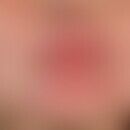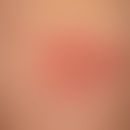Synonym(s)
DefinitionThis section has been translated automatically.
1,3-dihydroxybenzene a phenol derivative. The benzene nucleus carries two hydroxy groups in meta position. Resorcinol is isomeric to catechol (1,2-dihydroxybenzene) and hydroquinone (1,4-dihydroxybenzene).
IndicationThis section has been translated automatically.
Acne vulgaris, psoriasis, seborrhoea.
Recently, a resorcinol preparation (Resorcinol) has been offered in a care series (Eucerin Even Brighter) for the treatment of hyperpigmentation.
Notice! Due to the unfavourable benefit-risk ratio a negative monograph exists for Resorcinol!
You might also be interested in
Standard concentrationThis section has been translated automatically.
Remember! When applying the hair spirit on blond or grey hair, red colouring may occur. The substance dyes skin and objects (clothing) red!
Undesirable effectsThis section has been translated automatically.
Allergic reactions, goiter.
ContraindicationThis section has been translated automatically.
IncompatibilityThis section has been translated automatically.
Note(s)This section has been translated automatically.
The DKG has tested resorcinol in vaseline 1.0% so far. This application form is no longer available as a test substance in Germany. In this respect, a 2% concentration of resorcinol in vaseline is now (as of 2016) recommended.
LiteratureThis section has been translated automatically.
- Geier J et al (2016) News on the epicutaneous test series of the German Contact Allergy Group. Dermatology at work and in the environment 64: 70-75




